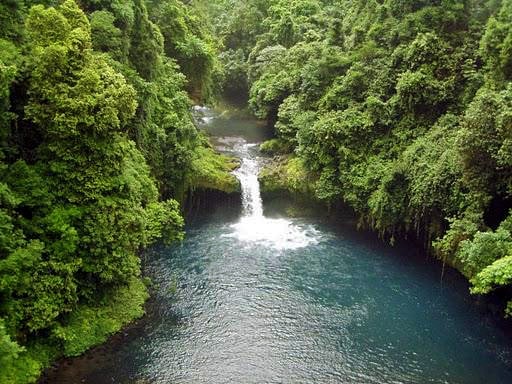Ecuatorial Guinea attractions for all tourists

Travel on a low budget and top places to see all around the Guinea Ecuatorial? The southernmost and easternmost of the national parks in Equatorial Guinea, Altos de Nsork is set deep in the West African wildernesses of Rio Muni. Established in 2000, the vast reserve encompasses more than 700 square kilometers of land, offering some of the most untouched jungle and highland ecosystems in the region. There aren’t many visitors to this far-flung section of the nation, but those who do come can hike through paths cut out by forest elephants, wonder at the great biodiversity of plants, spy out mandrills and black colobus monkeys in the trees, and even rare buffalo in the woods.
The little speck of Corisco Island can be found patrolling the entrance to Corisco Bay and the estuaries of Rio Muni just a stone’s throw from the coast of Equatorial Guinea. And while the untrodden beaches and swaying grasses of the sand dunes here are pretty to say the least, it’s the history and culture that really draw the crowds (even though those crowds are relatively small!). Yep, not only is there a series of crumbling Spanish missions to be found amidst the inland jungles, but there’s also been evidence of human habitation in these parts since the early Iron Age!
The provincial capital of Centro Sur is a place to glimpse the bustle of day-to-day life that carries on between the jungle-dressed hills that dominate the vast proportion of Rio Muni (the Equatorial mainland). Tin shacks and rain-buffeted palms line the streets, while a clutch of little drinking joints host crowds of chattering locals. There’s also a local market that’s packed with multi-coloured veg and legumes and fruits plucked straight from the fields. And if you’re looking to go outdoors, then the spot is also neatly sandwiched almost equidistance between the national parks of Monte Alén and Altos de Nsork! Find additional details on https://cronosair.blog/.
For our spanish guests :
Ah, las vastas áreas silvestres del Parque Nacional Monte Alén: quizás el área más importante de belleza natural excepcional en África occidental de la que nunca has oído hablar. Y aunque las selvas húmedas y los cursos de agua del río Uoro siguen siendo una opción fuera de lo común, los que vienen están cosechando las recompensas: senderos de trekking vacíos; paquetes de safari personales y una experiencia incontaminada de la selva africana: ¡solo tres aspectos que me vienen a la mente! Aquí hay kilómetros y kilómetros de senderos mantenidos, junto con más vida salvaje de la que puedes sacudir en un plato de pollo ecuatorial con mantequilla de maní. Piensa en ranas goliath, gorilas, elefantes, cocodrilos y chimpancés súper raros …
Altos de Nsork, el más meridional y oriental de los parques nacionales de Guinea Ecuatorial, se encuentra en lo profundo de las zonas salvajes de África Occidental de Río Muni. Establecida en 2000, la gran reserva abarca más de 700 kilómetros cuadrados de tierra, ofreciendo algunos de los ecosistemas selváticos y montañosos más vírgenes de la región. No hay muchos visitantes en esta sección remota de la nación, pero aquellos que sí pueden caminar por senderos cortados por elefantes del bosque, maravillarse con la gran biodiversidad de plantas, espiar mandriles y monos colobos negros en los árboles, e incluso búfalos raros en el bosque.
Rodeada por los vastos humedales verdes del río Muni, franjas interminables de manglares silvestres y algunos de los lugares de observación de aves menos conocidos de África occidental, la ciudad peninsular de Cogo se adentra en el Océano Atlántico en el extremo sur de la costa de Guinea Ecuatorial. Y aunque los tramos de la costa inexplorada hacia el norte son de interés, es el mosaico de iglesias y casas de pueblo españolas medio arruinadas, las calles empedradas y la curiosa sensación europea de la ciudad lo que con mayor frecuencia ocupa el primer lugar del menú. Quédese unos días y disfrute del sueño ibérico. Leer extra detalles a Viajar a Guinea Ecuatorial.